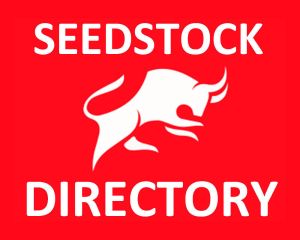By: Sara Brown, Farm Journal Livestock and Production Editor
Select and develop heifers to be productive cows
As you rush to sort calves in the light of high calf prices, be careful with the ladies in the lot. Your replacement heifers need a little more TLC than you may have thought.
In our previous article in the Maximize the Herd series, (“Choose Sires Wisely,” October 2013), Bob Weaber, cow-calf Extension specialist at Kansas State University, clued us in to the next step of taking your herd to a higher level of profitability: selecting replacement heifers that fit their environment.
Seems easy, but Kris Wilson, the general manager of the Bell and TO Ranches of the Silver Spur, has firsthand experience that it takes discipline to choose and develop heifers that can go the long haul. Rough canyon terrain and drought-stressed native grass pastures are the two biggest challenges he faces on the semi-arid desert environment of New Mexico.
“Because of our environmental challenges, I really think that if we are going to keep heifers in this area they need to be raised right here and taught how to be successful cows in this environment,” Wilson says. “One thing that I think has been lost is the sheer animal husbandry aspect of heifer development—being able to physically select the right animals for our herds.”
While other operations may experience different forage, environment and management challenges, or elect to utilize professional heifer development services, the key in any situation is to select and develop heifers to fit your environment, feed resources and future marketing goals.
“If we are going to change our production system to use fewer inputs, such as supplemental feedstuffs, and being more profit-minded, we must make sure we are selecting cows that have the appropriate biological size and type for their environment,” Weaber says.
“The two pieces that play the biggest roles in those nutrient demands is the mature weight of the cows and their lactation potential,” he explains, “because we know the cows with larger mature weights have higher maintenance requirements 12 months a year. The cows with higher lactation potential also have higher maintenance requirements, due to larger organ mass, 12 months a year, and more when they are lactating. About half the calories consumed in the beef value chain are attributed to dam maintenance requirements. So focusing on this area can have big benefits for the industry.”
“In some higher precipitation environments, we can do things to change forage availability, such as intensive grazing using improved forage species. However, in the Flint Hills of Kansas and other western states where we rely on native range, it is very difficult. The easiest thing is change the cows to fit the environment,” Weaber says.
Select her dam first. “On the Bell Ranch, one of the big keys to our heifer development program is to select heifers based on their dam side,” Wilson says. “We’ll ride through our cows and calves and evaluate what the dam looks like. Is she the kind of cow that has been able to remain fleshy in a droughty environment? Does she have proper structure and feet? Is she handling the rocks that we encounter in this environment? Does she have a good udder?” Wilson says. “Once the cow fits a certain type of physical criteria, then we evaluate the heifer at her side.”
As producers consider growing their herd sizes, Weaber says to be very mindful of what your forage resources are and select heifers appropriately.
“Our natural tendency—and I’m as guilty as anybody—is to sort out the biggest, fleshiest, nicest-looking set of heifers out of that group. In the long run, that results in increased cow size and lactation production in your cow herd—which means they will have higher maintenance needs,” Weaber says.
“These heifers probably have a great assortment of growth genes from their parents and are from a cow with above-average lactation potential. So you get into this cycle of selecting bigger and higher-milking heifers year after year. Selection should be for the optimum size based on your resource base, rather than selecting to make cows too big or too small, both of which have consequences.”





